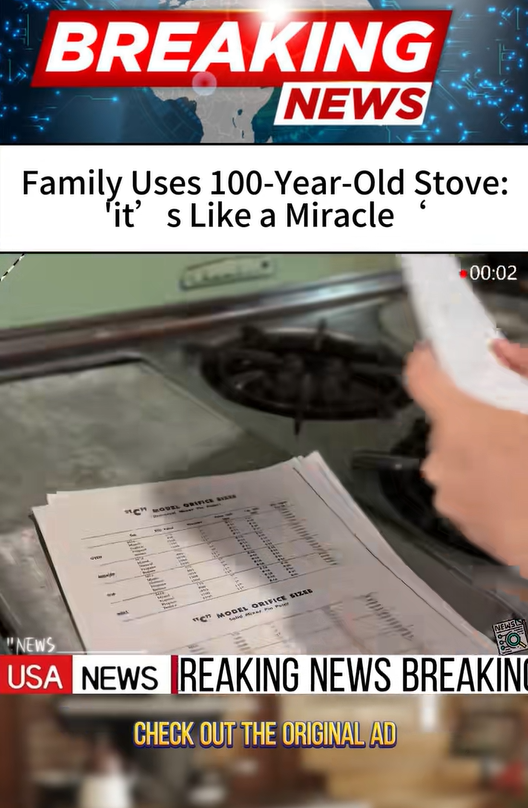In an age when kitchen appliances are controlled by smartphones and voice commands, one Vermont family has gone viral for cooking dinner the old-fashioned way — on a 100-year-old cast-iron stove that still works perfectly.
To the Miller family, the antique appliance isn’t just a relic from another century — it’s the heart of their home.
“It’s like a miracle,” said Linda Miller, 48, running her hand over the cool iron surface. “You’d think something this old wouldn’t even light. But every morning, it hums back to life like it’s been waiting a hundred years just to make breakfast again.”
A Century of Stories
The stove — a 1925 Glenwood Model C — originally belonged to Linda’s great-grandmother, who cooked on it through the Great Depression and both World Wars. For decades, it sat forgotten in a barn, coated in dust and rust, until Linda’s husband, Tom, found it last spring while helping clean out a family property.
“I almost scrapped it,” Tom laughed. “It looked like something out of a museum — cracked enamel, soot everywhere. But when I checked the firebox, it was solid. So I thought, why not give it another chance?”
After months of careful restoration — new gaskets, sandblasting, and hours of polishing — the Millers finally fired it up in July. To their amazement, the century-old stove roared to life on its first try.
“We just stood there, staring,” Linda said. “It was like watching a ghost breathe.”
Cooking the Old Way
Since then, the family has used the stove daily — to bake bread, roast vegetables, and even can applesauce from their backyard orchard. Linda’s teenage daughter, Emily, says the food “tastes different — warmer, somehow.”
“It’s not just about cooking,” Emily said. “It’s like you’re part of history every time you turn it on.”
The stove burns both wood and gas, allowing the Millers to cook even during power outages — a feature that came in handy last winter when heavy snow knocked out electricity for three days.
“While everyone else was eating cold cereal, we were making stew,” said Tom. “That old stove saved us.”
A Lesson in Sustainability
Experts say the Millers’ story highlights a growing interest in sustainable living and repair culture — a shift away from disposable appliances and toward craftsmanship that lasts generations.
“Appliances from the early 20th century were built to endure,” explained Dr. Rachel Kinsey, a historian specializing in American domestic design. “The Millers’ stove is a perfect example of how functional design and emotional heritage can intersect. It’s a living artifact.”
The family says maintaining the stove takes patience — cleaning out ash daily, tending to the flame, and managing the heat manually — but they see it as a labor of love.
“You have to listen to it,” Linda said. “You learn its rhythms, its little quirks. It teaches you to slow down.”
A Connection Across Time
The Millers’ kitchen has become something of a local landmark. Neighbors drop by to see the stove, and the family has hosted school field trips for local history classes. One student described it as “a time machine that makes cookies.”
For Linda, the stove represents more than nostalgia — it’s continuity.
“My great-grandmother cooked on this. My mom grew up sitting next to it. Now my daughter bakes with it,” she said. “It feels like we’re all in the same room, even though they’re gone.”
Still Going Strong
A century after it was first lit, the Glenwood Model C continues to defy expectations. The Millers say it will stay in their family for as long as it lasts — and judging by its performance, that could be another hundred years.
As Linda wiped her hands on her apron, she smiled softly at the old stove’s flickering flame.
“People say it’s just a machine,” she said. “But when you see it come alive every morning — after all this time — it really does feel like a little miracle.”
